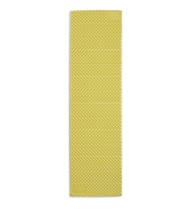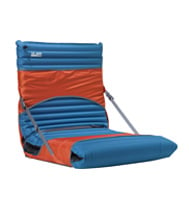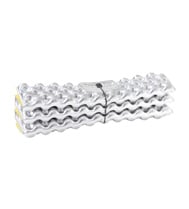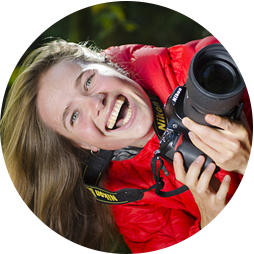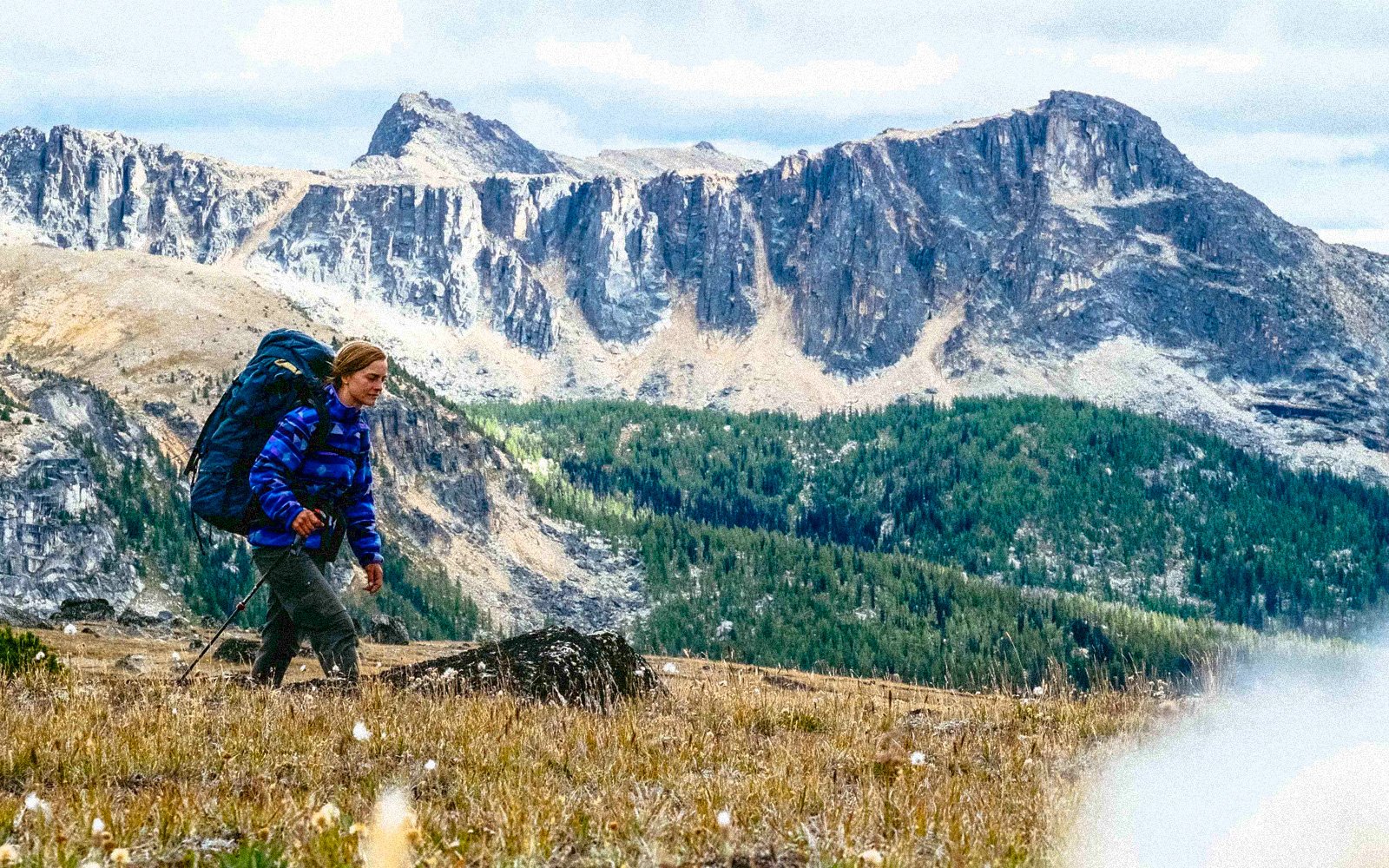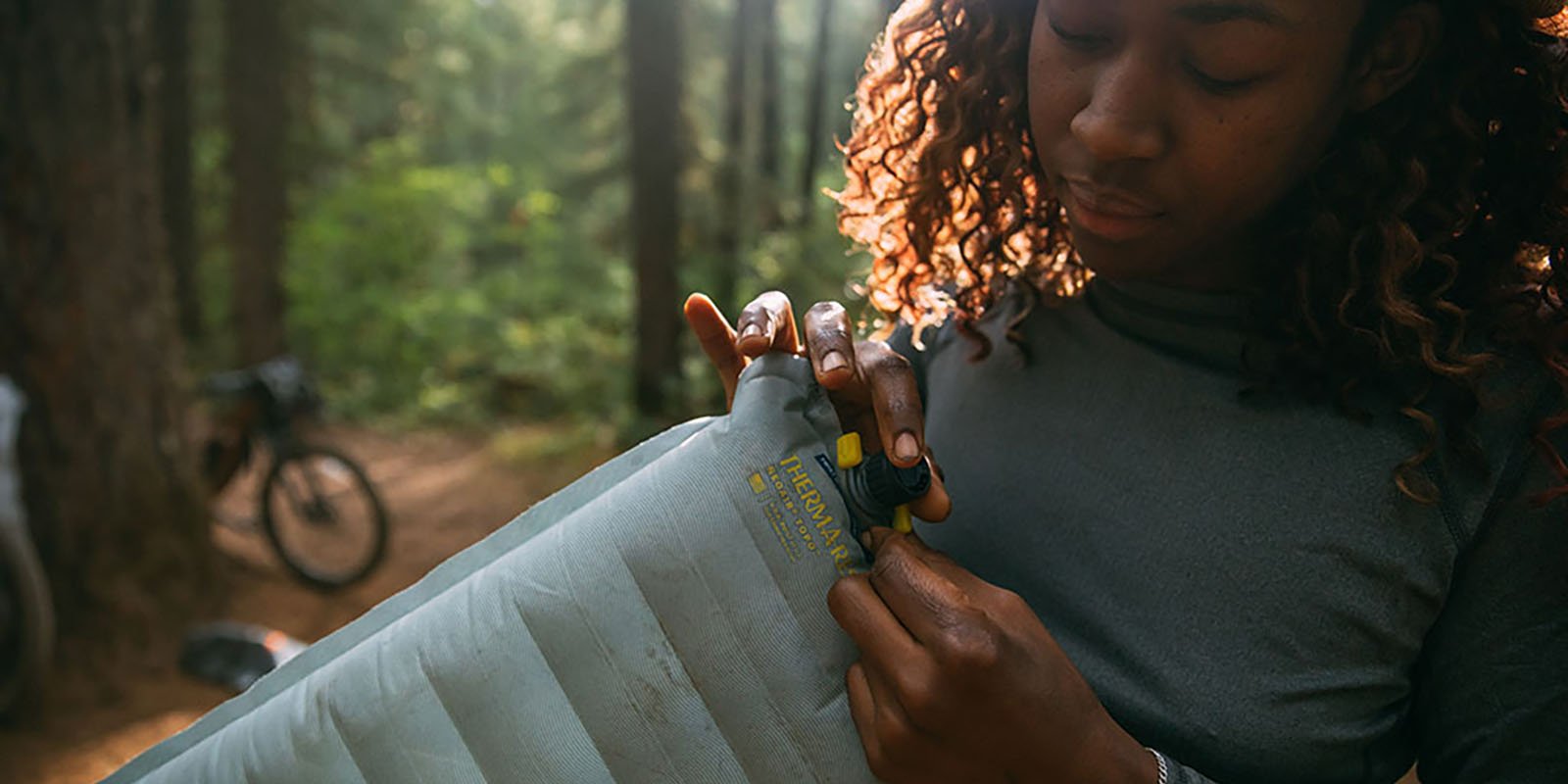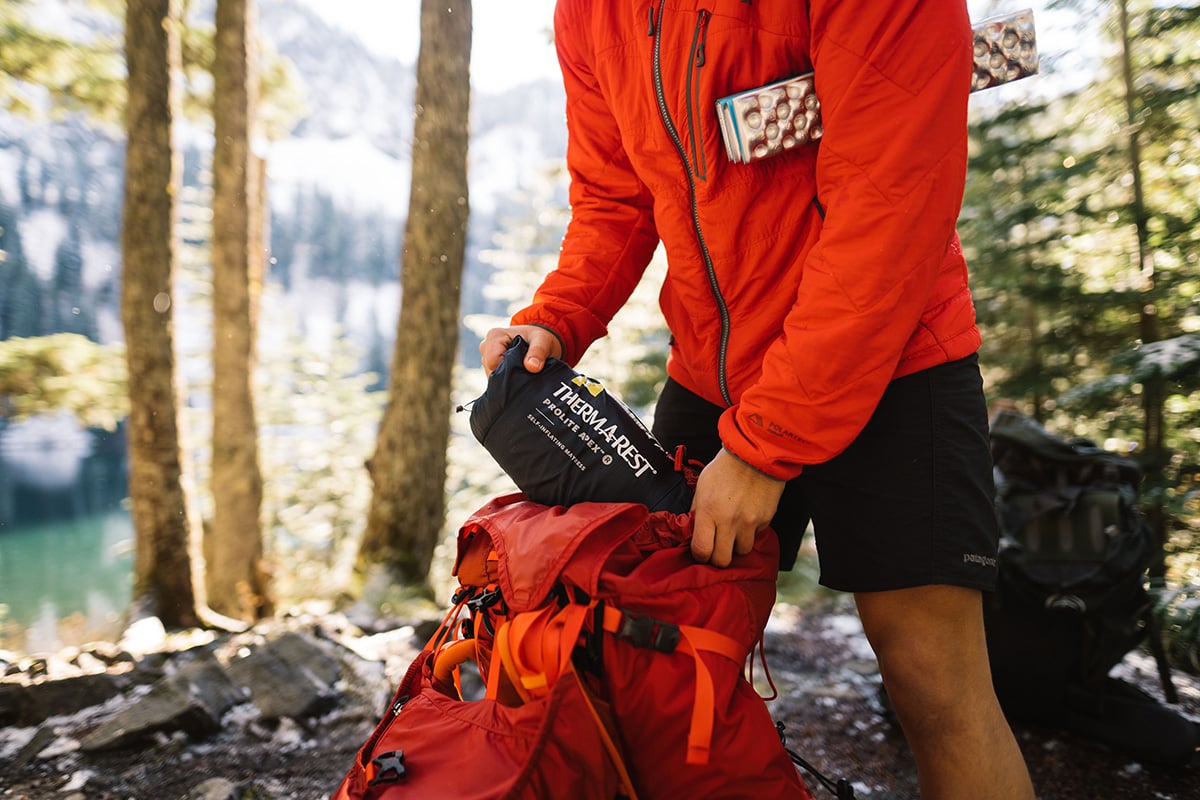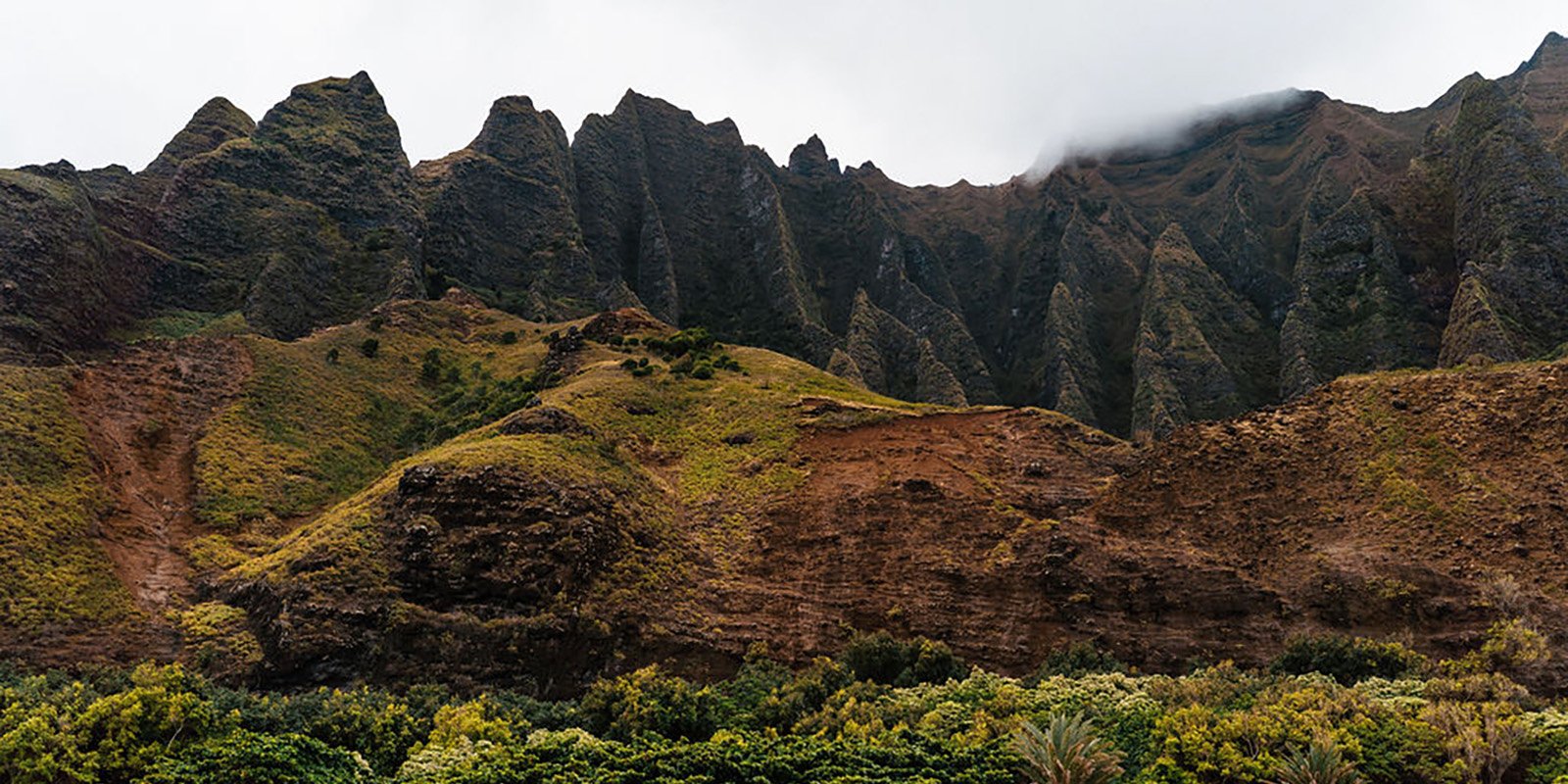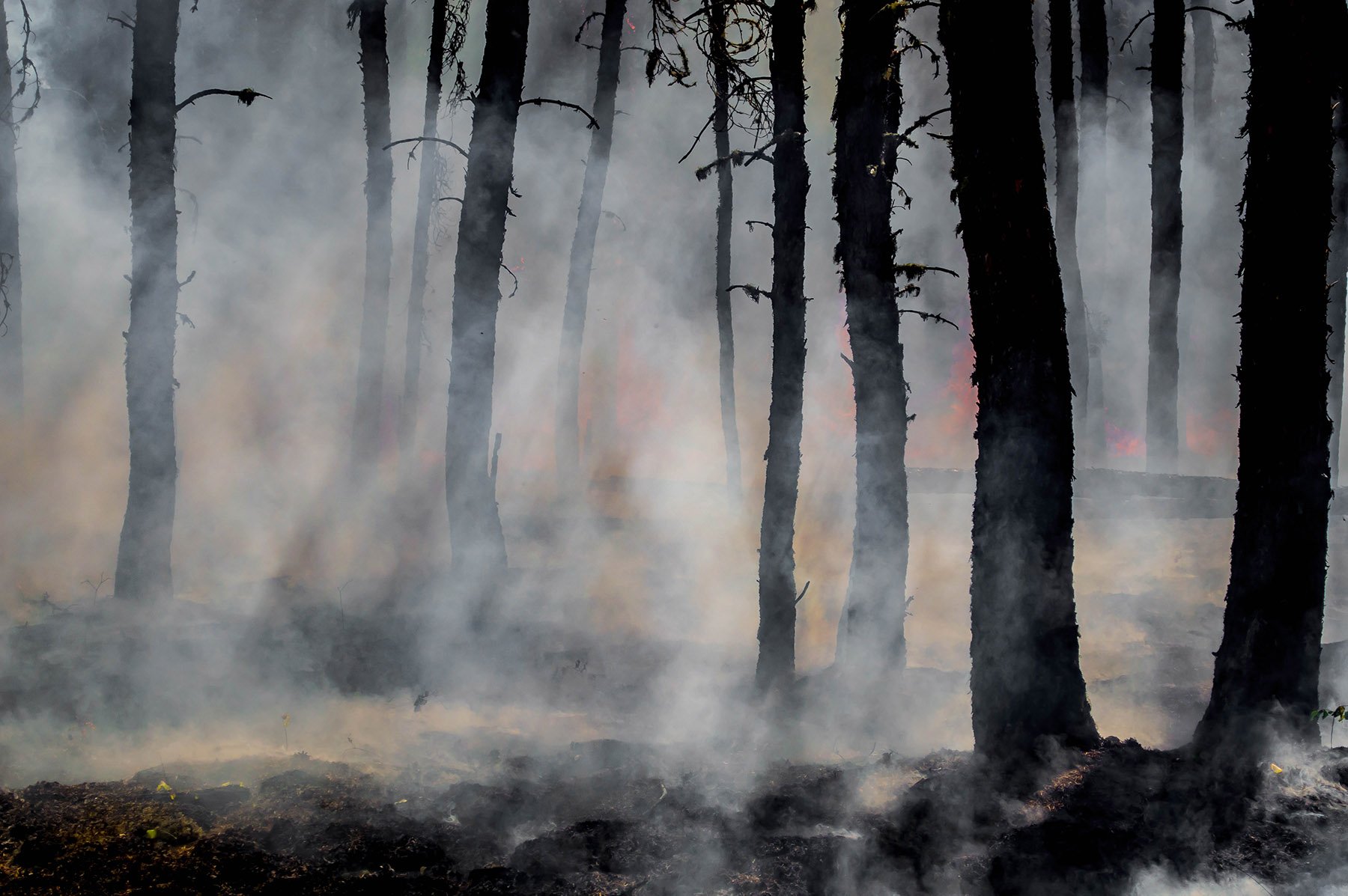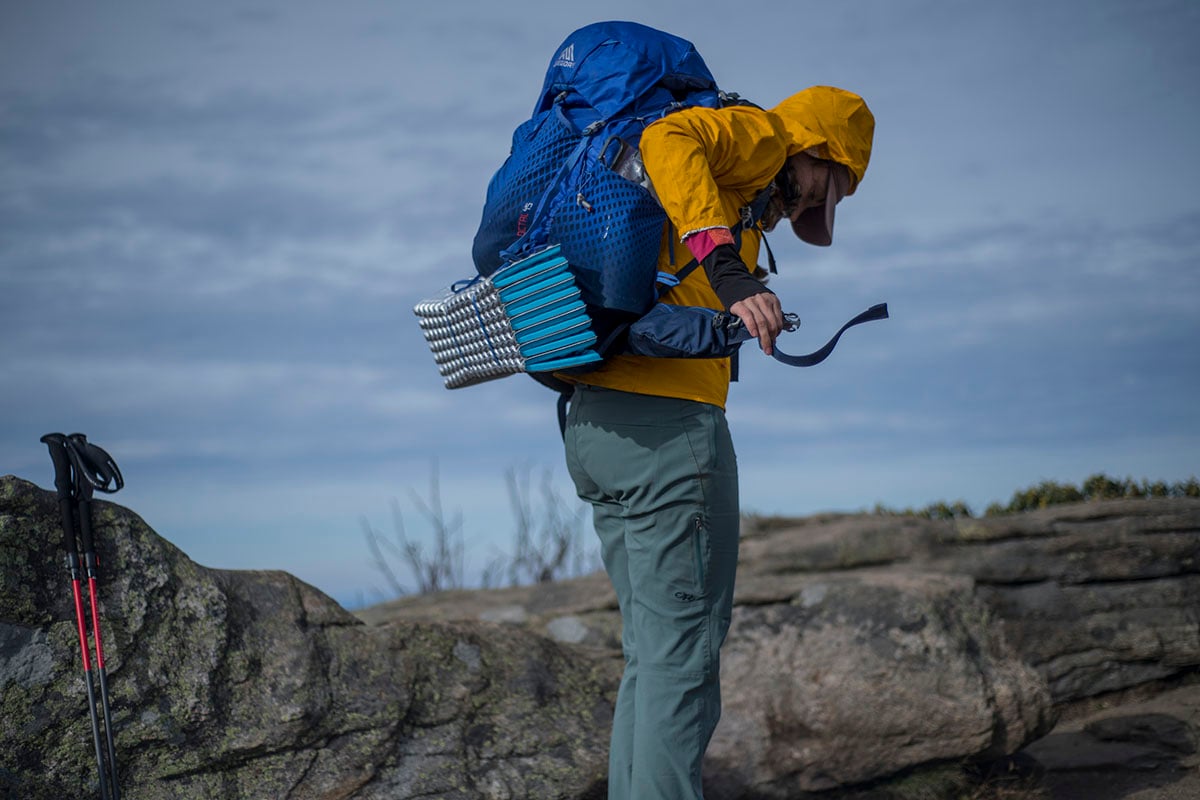
While on a trip last summer, I learned that my friend Laura was pregnant. The first to be pregnant of my close adventure friends, I was excited for her but a little selfishly sad. Having no experience backpacking with babies, I wondered if this meant I was losing one of my favorite trail buddies. Surely the days of taking off at a moment’s notice to explore New Zealand or ski and surf on the same day would probably be over.
The sadness was quickly replaced by a surge of joy—Laura would have a little adorable human being of whom I would be able to take copious amounts of photos and help introduce to all sorts of adventures for the first time. Corbin was born in February, and it was only a few months later that we started planning his first backpacking trip.
Here are some tips that we learned from our late-summer adventure.
What to Know Before You Go Backpacking with Babies

1. DISTANCE
Pick a hike that isn’t too much of a drive, many kids are much more into hiking than driving. We chose a hike that was about a 1.5-hour drive from Corbin’s home.
Pick a comfortable hiking distance for you. There is no shame in going a mile and out for just one night; just get out there and introduce your kid to the real world! We decided a loop would be fun. Our first day was 3.5 miles to our camp at a beautiful alpine lake, then a layover day to dry diapers, and finally, a 4.5-mile hike out on day three.
Corbin did fantastically well and fell asleep pretty much every time we got him on the trail. He loved the changing scenery and playing peek-a-boo along the way.

2. AGE
We decided it was best to go after Corbin was not a fragile newborn but before he was crawling, walking, and eating solid food. Laura breast-feeds, so no special food was necessary except what his mama carried in her body. This saved a ton of weight and time, although you need to make sure mom stays hydrated.
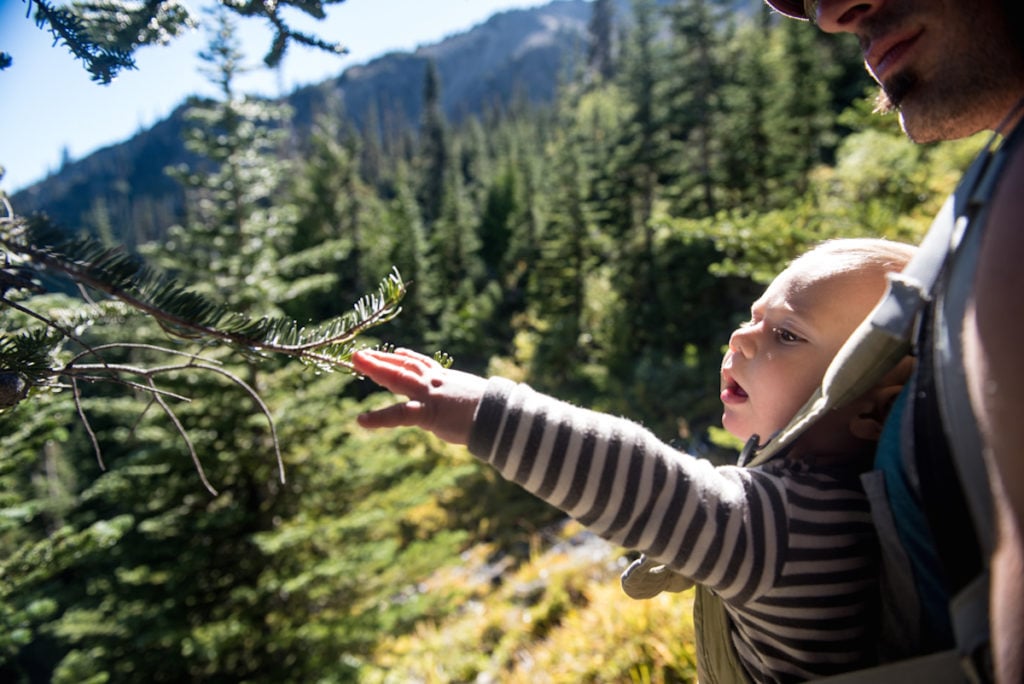 We couldn’t have hit the age more perfectly. Corbin was 6 months old, almost crawling, but still very happy to be carried. We decided the good age window is somewhere between 4 and 8 months depending on your kid’s development and the weather.
We couldn’t have hit the age more perfectly. Corbin was 6 months old, almost crawling, but still very happy to be carried. We decided the good age window is somewhere between 4 and 8 months depending on your kid’s development and the weather.
3. WEATHER
We planned for mid-September, hoping for some of that beautiful late-fall Washington weather. This would give us plenty of daylight, less heat, and fewer bugs. We hit it perfectly on all fronts!
What to Bring Backpacking with Babies
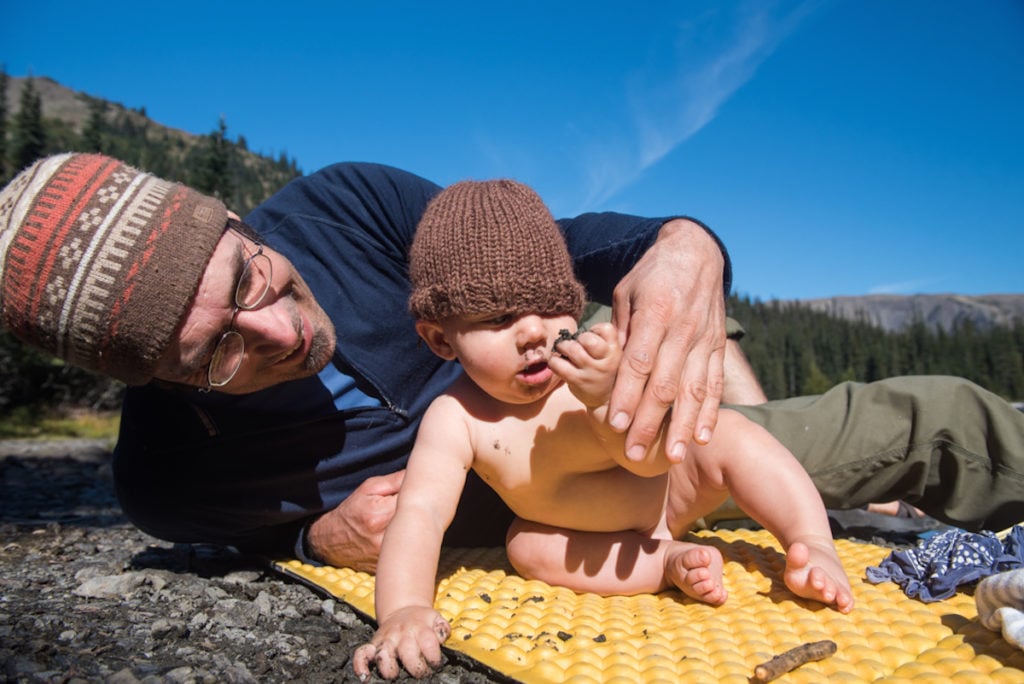
1. A PARTNER AND LIGHTWEIGHT GEAR
It is helpful to have two parents, or a friend, on a trip to share the load. Consider bringing a lightweight tent, healthy freeze-dried food and lightweight sleeping gear. Our Therm-a-Rest sleeping bags and sleeping pads saved both crucial weight and space in the packs.
Laura and Griffin carried all their own gear. Laura carried the sleeping bags, sleeping pads, stove, water and baby clothes, totaling about 25 lbs. Griffin carried the tent, fuel, food, water and diaper, with his pack weighing in around 45 lbs. I carried my own tent, food, and camping gear; my camera was my child of burden.
Corbin added about 20 lbs of weight to the trip, plus diapers, and baby clothing, but he can’t carry any of it like us adults so shaving weight in other places is key.
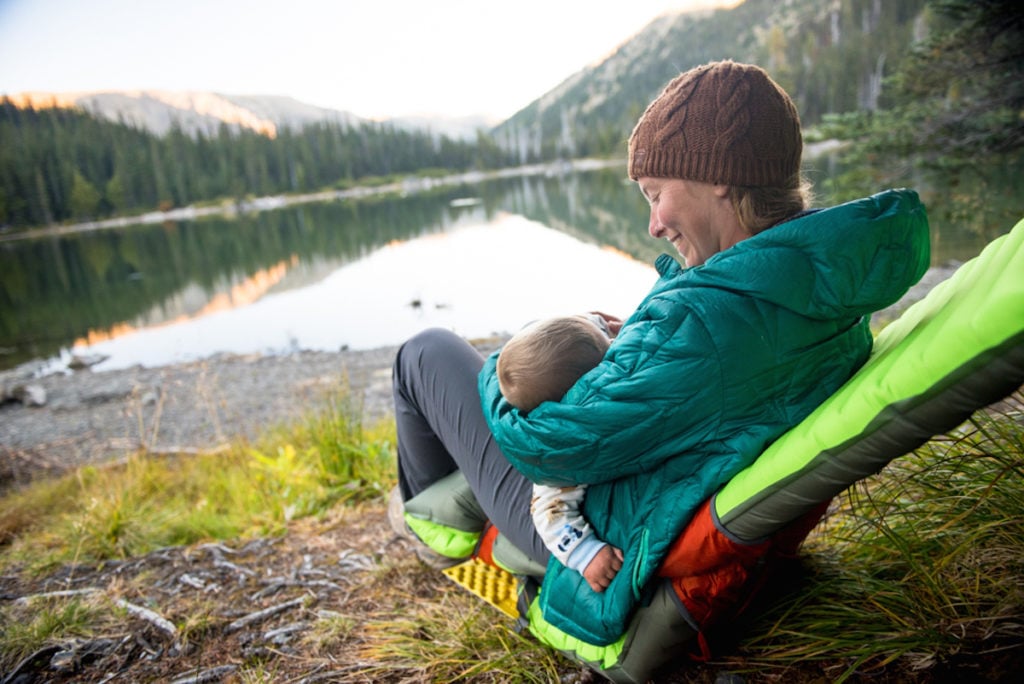 Pictured here is a NeoAir® Trekker™ Sleeping Pad set up with a Trekker Chair. The Trekker pad is out of production, but a great current alternative is the NeoAir Topo™.
Pictured here is a NeoAir® Trekker™ Sleeping Pad set up with a Trekker Chair. The Trekker pad is out of production, but a great current alternative is the NeoAir Topo™.2. A FRONT CARRIER
Laura and Griffin decided to carry Corbin in an Ergobaby. They chose this one because he could be carried either facing out or in, and even nurse while hiking. This allowed Laura and Griffin to still carry gear in a backpack and trade-off with Corbin.
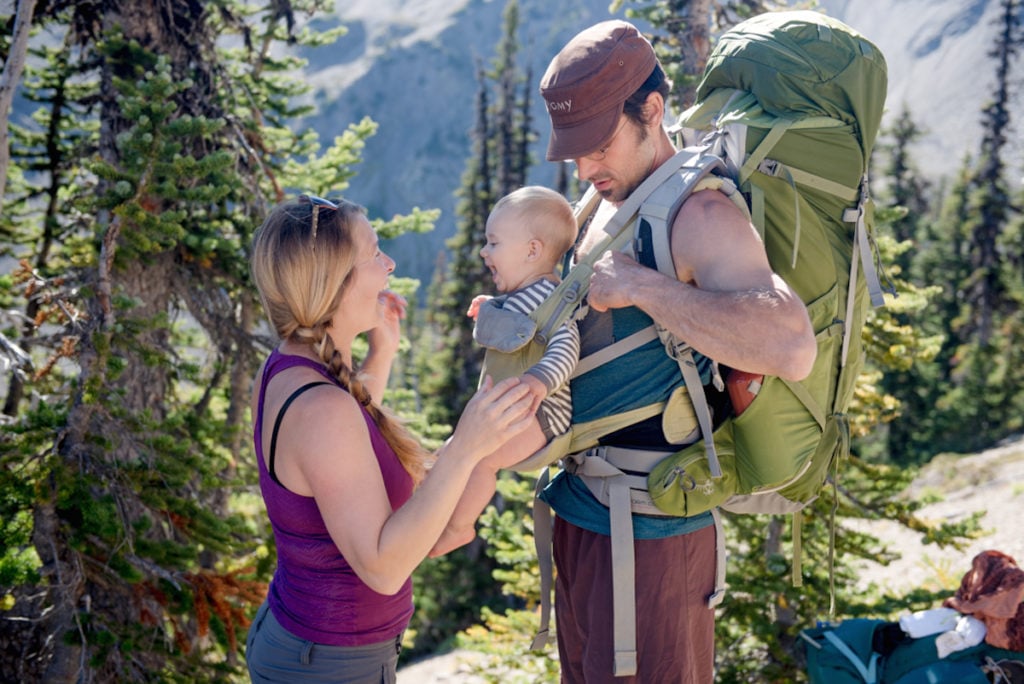
3. BABY MEDICAL KIT
Consider some changes to your medical kit while backpacking with a baby. Late fall in the northwest sees a lot of hornet activity, and while I was probably more worried than Corbin’s parents about him getting stung by a bee for the first time, we packed baby Benadryl as a precaution. If you do have bee allergies in your family it could be a good idea to get your child allergy tested before backpacking. We saw lots of bees, but thankfully they were not an issue. And, as Laura said, “We can’t live in fear, or we will do nothing!”
Some Other Important Considerations
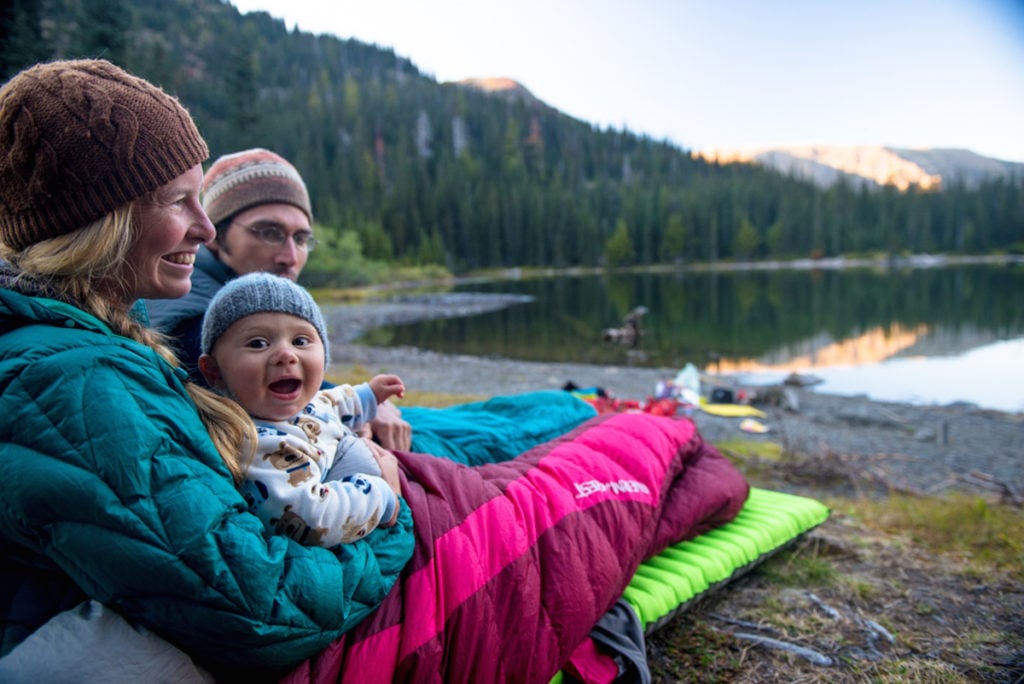 Pictured here is a Mira™ HD Women’s Sleeping Bag and a NeoAir® Trekker Sleeping Pad. Both products are out of production, the best current sleeping pad alternative is the NeoAir Topo™. We no longer make gender-specific sleeping bags and the closest current alternative to the Mira HD is the unisex Questar™ Sleeping Bag.
Pictured here is a Mira™ HD Women’s Sleeping Bag and a NeoAir® Trekker Sleeping Pad. Both products are out of production, the best current sleeping pad alternative is the NeoAir Topo™. We no longer make gender-specific sleeping bags and the closest current alternative to the Mira HD is the unisex Questar™ Sleeping Bag.1. SLEEPING WITH YOUR BABY
Laura, Corbin and Griffin co-sleep at home (share a bed), so camping wasn’t much different for them. Corbin slept in Laura’s bag. Her biggest concern at first was all the down near the baby’s face, but she found that the bag was only partially zipped up, she could use it to cover both of them up to just above the naval. Because the bag was only partially zipped up, a warmer sleeping bag was key.
Corbin was dressed in several warm layers and we (unsuccessfully) attempted to keep a hat on him while he slept. Laura wore a tight-fitting, long-sleeved wool top, and pulled it up as needed to nurse Corbin (he ate about every 2 hours). The first night they slept like this Laura didn’t sleep very well out of paranoia that his face would be covered by the sleeping bag, but by sleeping on her side she was able to use her top arm to clamp the bag down. Side sleeping like this is definitely more comfortable on a thicker pad like the NeoAir Topo Luxe.
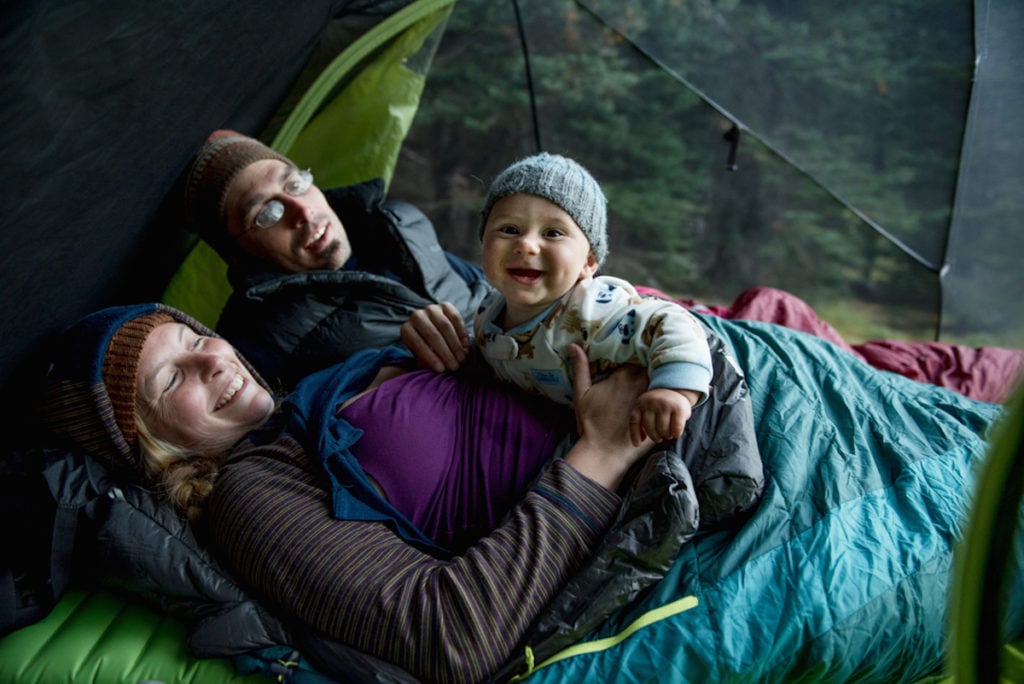 Seen here is a NeoAir® Trekker™ Sleeping Pad. The Trekker is no longer in production, the closest current alternative is the NeoAir Topo™.
Seen here is a NeoAir® Trekker™ Sleeping Pad. The Trekker is no longer in production, the closest current alternative is the NeoAir Topo™.2. THE DIAPER SITUATION
A full diaper can weigh close to two pounds, and if you’re out multiple days that becomes too much to carry. Following leave no trace in the backcountry can be a problem. You can’t just bury a nasty chemical-filled baby diaper in the woods. Laura and Griffin decided cloth diapers were the way to go. They can be washed and boiled and hung to dry. We ended up having fewer diapers than optimal, so Corbin spent a lot of time happily sitting naked in the grass or on the beach while they dried on our layover day. Suns out, buns out!
Corbin usually uses cloth diapers at home, except for at night. Disposables absorb more, which means fewer changes at night. Because of this, we did pack in two 12-hour disposable diapers (one for each night). The one night we didn’t use one resulted in a wet bag and a baby being changed in the cold night air (not fun). We would definitely bring disposable diapers again.
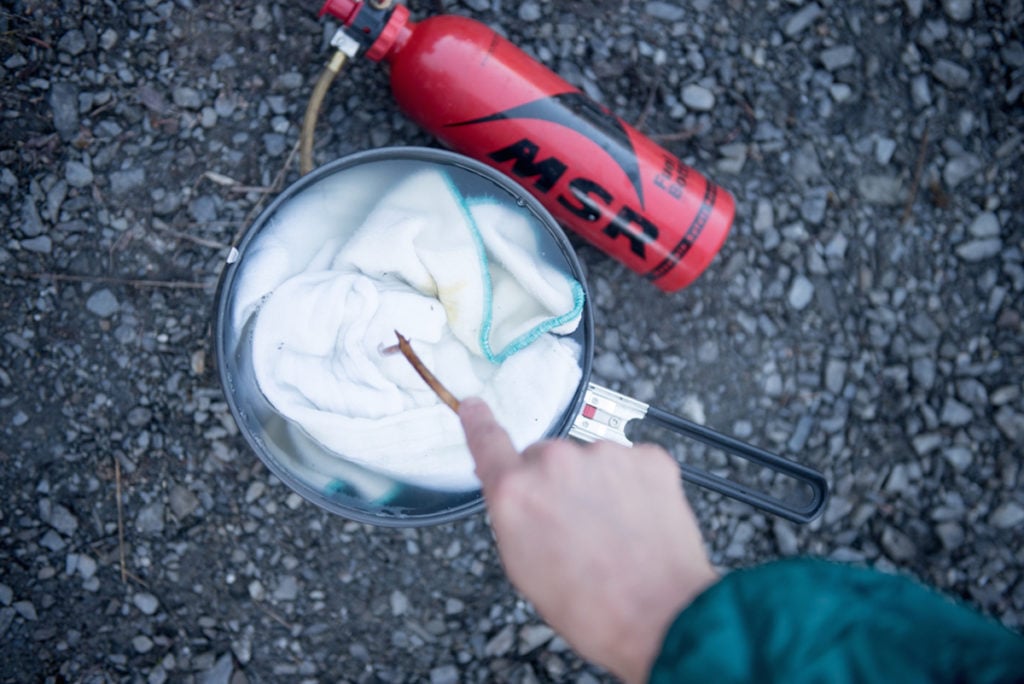
3. DITCH THE TOYS FOR NATURE
Sticks and lumps of moss are great options, healthy and readily available. Also packaged food, like energy bars, and plastic camping plates were a great hit for toys.
Corbin just loves water. There was a small waterfall outside our camp and he was completely mesmerized by it. We crossed many creeks and each time he had to gaze.
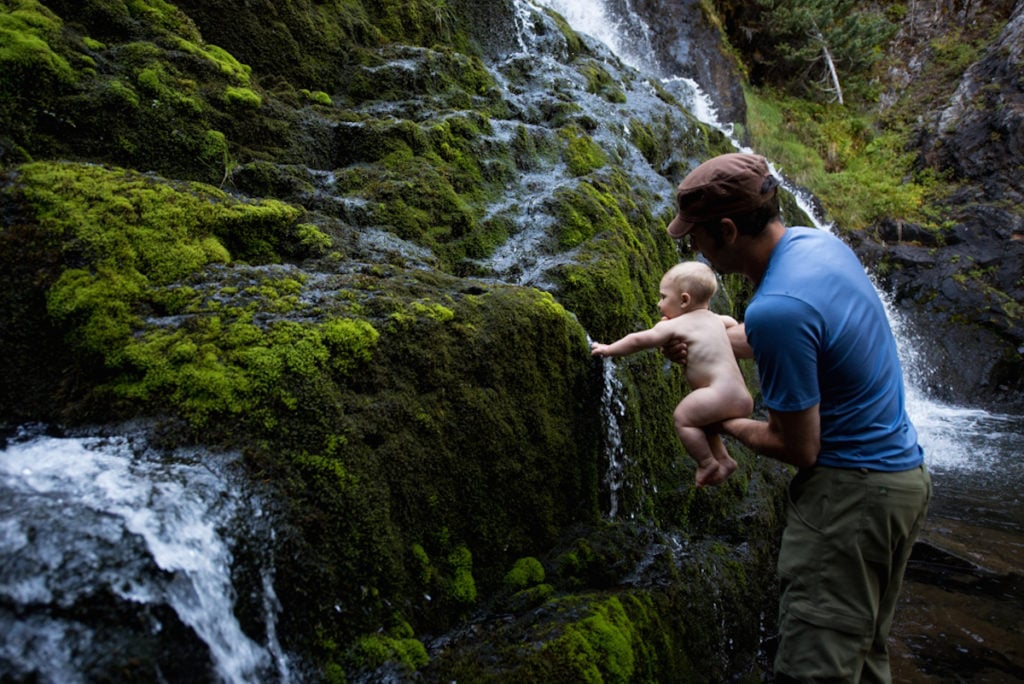
Enjoy introducing your small one to nature!
Related Posts:
- 5 Benefits of Cold Weather Backpacking with a Baby
- Taking Kids Into the Backcountry
- 5 Tips for Getting Kids Outdoors & Loving It
Updated. Originally published October 6, 2016

